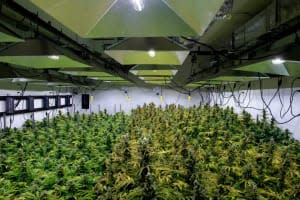The federal marijuana ban is contributing to climate change

Marijuana isn't actually very green, it turns out. Cannabis is the most energy-intensive crop in the U.S., Politico reports — though it needn't be. Grown in warehouses, marijuana production can require 2,000 watts of electricity per square meter, versus about 50 watts for lettuce, Lawrence Berkeley National Laboratory found. But marijuana grows great outdoors — it is called "weed" for a reason — in some areas of the country, especially Northern California and Southern Oregon.
"Because cannabis remains federally illegal, and the federal government regulates interstate commerce, none of the legal cannabis grown in Oregon or California can cross state lines," Politico's Natalie Fertig and Gavin Bade write. "Instead, each new state that legalizes recreational marijuana must also grow enough to meet consumer demand in that state. This would be like every state in America being required to grow all of the oranges consumed each year by its residents, rather than simply buying them from Florida."
Some states and cities require indoor cannabis operations to use energy-efficient LED grow lights or take other steps to mitigate carbon emissions, but "reducing the environmental impact of cannabis in state-siloed markets is not simple — or cheap," Politico says. Allowing the country to buy marijuana grown outdoors on the West Coast may not be a perfect solution either, though, since cannabis also takes water to grow, and water is a critically scarce commodity in Northern California and Southern Oregon.
